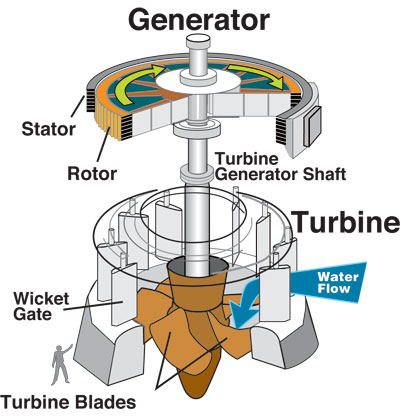Turbines
Mechanical energy has been discussed thus far. However, it needs to be in the form of electrical energy for proper usage. Similarly to wind energy, this conversion is carried out through the use of turbines.
A turbine is a wheel like object with large symmetrical blade-like protrusions. The shape and angle of these blades varies depending on the specific use. For example, impulse turbines are generally bucket-shaped, while reactive turbines are usually flatter. The given examples represent somewhat broad categories of turbines and there are more differences between the types within these categories.
The turbines are an integral part of the hydroelectric process. When the water strikes the blades of the turbines, they rotate about a crank on a generator. This builds up a charge, which is stored for later use. More details will be given about the generators in a later section.
The main two categories of turbines are the above mentioned impulse and reaction turbines. While they share the same fundamental principle, their differences make them better suited for different situations.

https://water.usgs.gov/edu/hyhowworks.html